Nestled in the southern desert of Egypt, near the border with Sudan, the Abu Simbel Temples are among the most awe-inspiring and iconic monuments of ancient Egypt. Carved into the mountainside by Pharaoh Ramses II in the 13th century BCE, these temples are a testament to the grandeur and architectural genius of the ancient Egyptians. The larger of the two temples is dedicated to Ramses II himself, while the smaller temple honors his beloved wife, Nefertari, and the goddess Hathor. Known for their colossal statues, intricate carvings, and the famous solar alignment that occurs twice a year, Abu Simbel continues to captivate visitors from around the world. Whether you’re visiting for the rich history, the stunning art, or the breathtaking landscape, a trip to Abu Simbel offers a profound and unforgettable experience. This guide provides essential information on when to visit, how to get there, and what to expect during your journey to this UNESCO World Heritage site.
- Egypt Tour Magic
- Egypt Tour Packages
- Excursions in Egypt
- Cairo Tours and Excursions
- Hurghada Tours and Excursions
- Soma Bay Tours and Excursions
- Makadi Bay Tours and Excursions
- Sahl Hasheesh Tours and Excursions
- El Gouna Tours and Excursions
- Marsa Alam Tours and Excursions
- Port Ghalib Tours and Excursions
- El Quseir Tours and Excursions
- Dendera and Abydos Day Tours
- Aswan Tours and Excursions
- Luxor Tours and Excursions
- Alexandria Tours and Excursions
- Sharm El Sheikh Tours and Excursions
- Top Rated Tours in 2025
- Optional Excursions in Egypt
- Private Transfer
- Blogs About egypt
- Ancient Egypt
- What You Need To know Before Your First Trip To Egypt
- Best Places to Visit in Egypt 2025
- Top Attractions in Red Sea Resorts 2025
- Top 10 Tourist Activities in Egypt
- Top 30 Activities You Can’t Miss in Egypt
- The Guide to Guided Tours in Egypt
- Egypt’s Ancient and Modern History
- The Nile River
- The Deserts of Egypt
- Historical Sites in Egypt
- Cairo
- Alexandria
- Luxor
- Aswan
- The Red Sea
- Dendera Temple
- El Fayoum Oasis
- Bahariya Oasis
- Siwa Oasis
- Al Alamein
- Marsa Matruh
- Ancient Egyptian gods
- famous Egyptian dishes
- UNESCO World Heritage sites
- About Us
- Why Egypt Tour Magic
- Egypt Tour Magic
- Egypt Tour Packages
- Excursions in Egypt
- Cairo Tours and Excursions
- Hurghada Tours and Excursions
- Soma Bay Tours and Excursions
- Makadi Bay Tours and Excursions
- Sahl Hasheesh Tours and Excursions
- El Gouna Tours and Excursions
- Marsa Alam Tours and Excursions
- Port Ghalib Tours and Excursions
- El Quseir Tours and Excursions
- Dendera and Abydos Day Tours
- Aswan Tours and Excursions
- Luxor Tours and Excursions
- Alexandria Tours and Excursions
- Sharm El Sheikh Tours and Excursions
- Top Rated Tours in 2025
- Optional Excursions in Egypt
- Private Transfer
- Blogs About egypt
- Ancient Egypt
- What You Need To know Before Your First Trip To Egypt
- Best Places to Visit in Egypt 2025
- Top Attractions in Red Sea Resorts 2025
- Top 10 Tourist Activities in Egypt
- Top 30 Activities You Can’t Miss in Egypt
- The Guide to Guided Tours in Egypt
- Egypt’s Ancient and Modern History
- The Nile River
- The Deserts of Egypt
- Historical Sites in Egypt
- Cairo
- Alexandria
- Luxor
- Aswan
- The Red Sea
- Dendera Temple
- El Fayoum Oasis
- Bahariya Oasis
- Siwa Oasis
- Al Alamein
- Marsa Matruh
- Ancient Egyptian gods
- famous Egyptian dishes
- UNESCO World Heritage sites
- About Us
- Why Egypt Tour Magic
A Complete Guide to Visiting Abu Simbel: Best Time, Travel Tips, and More
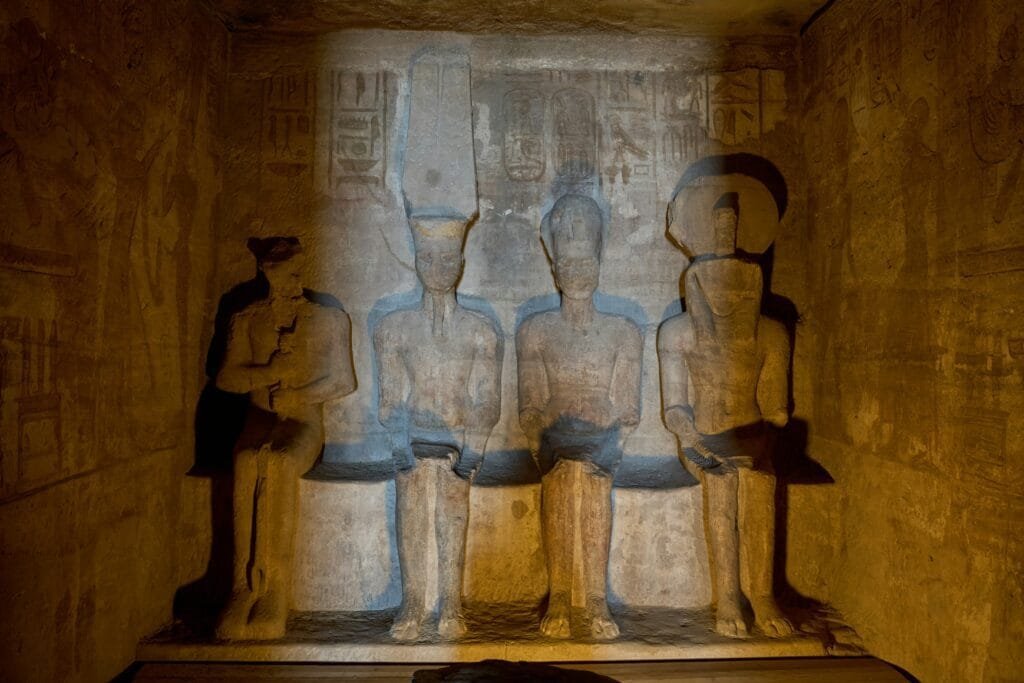
1. Overview of Abu Simbel Temple
The Abu Simbel Temples are two monumental structures located in the southern part of Egypt, near the border with Sudan. Constructed by Pharaoh Ramses II during the 13th century BCE, these temples are among the most impressive ancient Egyptian monuments. The larger of the two temples, known as the Great Temple, is dedicated to Ramses II himself, while the smaller temple honors his queen, Nefertari, and the goddess Hathor. The temples are carved into the face of a sandstone mountain, a feat that required immense skill and labor. The Great Temple is renowned for its four colossal statues of Ramses II, each measuring about 20 meters tall, which stand at the entrance. These statues represent Ramses as a god-king, with his signature headdress and a regal posture. The temples’ interior features finely detailed reliefs and inscriptions that narrate the Pharaoh's military triumphs, particularly his victory at the Battle of Kadesh. The entire complex was not only a religious site but also a symbol of power and a testament to Ramses’ greatness. Its grandeur and engineering reflect the Pharaoh’s ambition to leave an everlasting legacy, and the temples have become one of the most visited and revered monuments in Egypt.
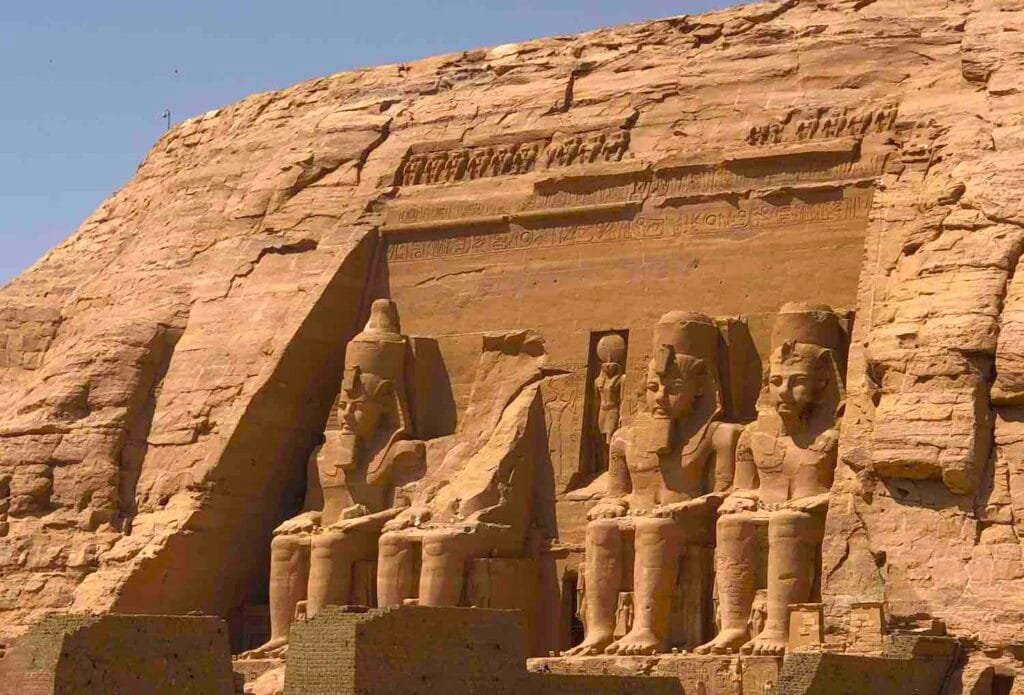
2. Key Highlights
Abu Simbel is renowned for its stunning architectural and artistic features. The Great Temple, dedicated to Ramses II, is the highlight of the site, with its four immense statues of the pharaoh standing guard at the entrance. These statues, which tower over 20 meters in height, have become iconic symbols of ancient Egypt. The temple’s façade is decorated with intricate carvings and reliefs depicting Ramses’ military campaigns, gods, and religious scenes, which serve as visual narrations of his reign. One of the most fascinating aspects of the Great Temple is the alignment of its sanctuary. The temple was carefully designed so that twice a year, on February 22 and October 22, the rays of the sun illuminate the inner sanctum, where the statues of Ramses II and three other gods are seated. This solar phenomenon, known as the sun festival, demonstrates the advanced understanding of astronomy that ancient Egyptians had. The smaller Temple of Nefertari, while less grand, is equally remarkable. It is dedicated to Ramses’ beloved wife, Nefertari, and features six statues of the royal couple at the entrance. Inside, there are beautiful reliefs that showcase their harmony and the queen’s revered status.
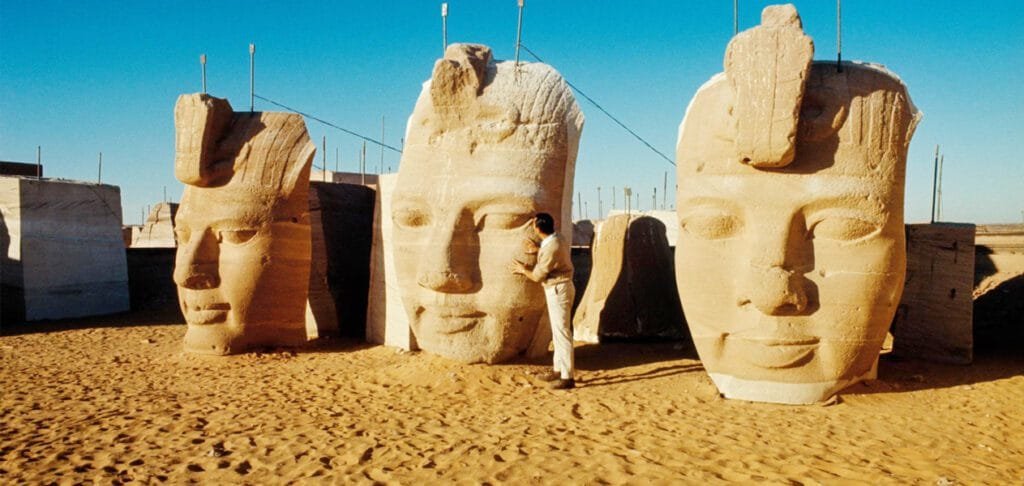
3. The Relocation of the Temples
The Abu Simbel Temples would have been lost forever had it not been for a massive, international effort in the 1960s to relocate them due to the construction of the Aswan High Dam. The dam, which was built to control the Nile’s flooding and generate hydroelectric power, caused the water levels of Lake Nasser to rise, putting the temples at risk of submersion. Recognizing the importance of preserving these architectural masterpieces, UNESCO launched a remarkable campaign to save them. The temples were carefully cut into more than 1,000 blocks, each weighing several tons, and transported to a higher location about 200 meters up the mountainside and 60 meters further inland. This massive project, which took four years to complete, required immense technical expertise and precision. The relocation effort involved dismantling the entire complex, preserving every detail of its structure, and reassembling the blocks in their new location. Today, this feat of engineering is considered one of the greatest preservation efforts in history, ensuring that the temples can continue to awe visitors and serve as a reminder of Egypt’s ancient grandeur. The temples’ relocation is a symbol of how the world can come together to protect cultural heritage in the face of modern challenges.
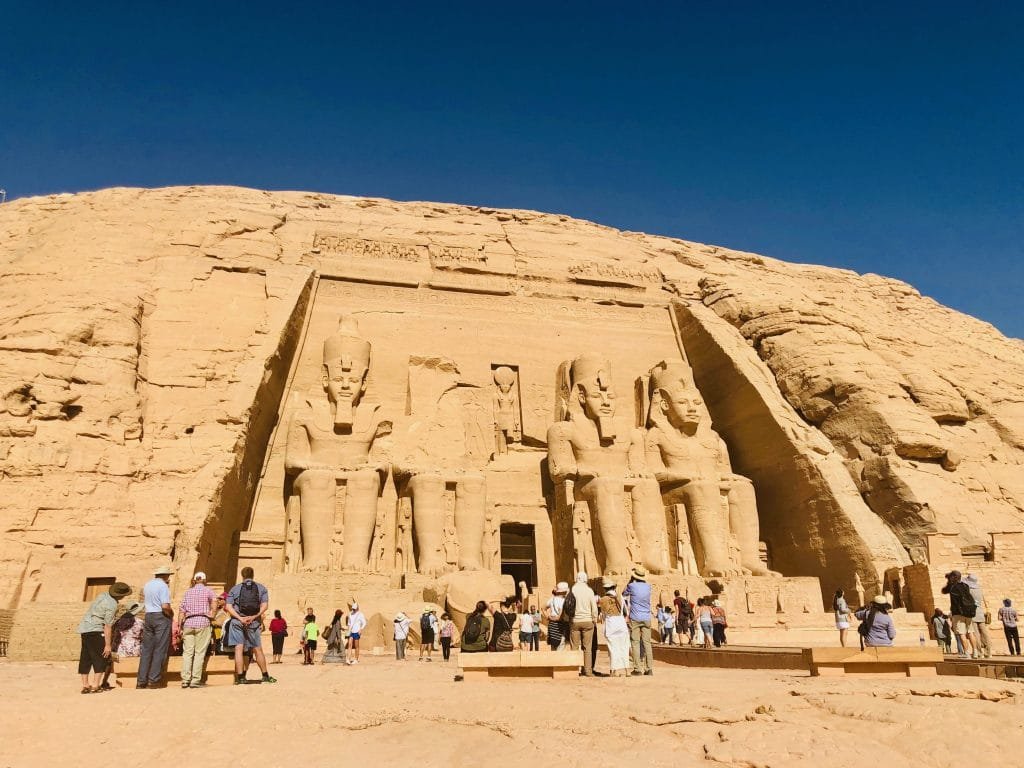
4. What to Expect on a Guided Tour
A guided tour to Abu Simbel is an immersive and educational experience. Most tours begin early in the morning to ensure you arrive while the temperature is cooler and to avoid crowds. The journey to the temples typically takes about 3 to 4 hours by bus or a short flight from Aswan. As you travel, you’ll witness the changing landscapes of Egypt’s southern desert, providing a glimpse into the vastness of the country’s natural beauty. Once at the temples, you’ll be accompanied by an expert Egyptologist guide who will offer in-depth explanations about the history, architecture, and significance of the temples. The guide will provide fascinating insights into the religious and political context of Ramses II’s reign, explaining how the temple complex was both a divine statement and a tool of propaganda. You’ll learn about the symbolism behind the reliefs, the gods depicted, and the pharaoh’s relationship with the divine. The tour also covers the solar alignment that occurs twice a year, providing an opportunity to appreciate the ancient Egyptians’ advanced knowledge of astronomy and their ability to design structures aligned with celestial events. The guide will help you understand the cultural and historical importance of this UNESCO World Heritage site, ensuring that your visit is both enriching and memorable.

5. Travel Tips
When preparing for a guided tour to Abu Simbel, it’s important to plan ahead for comfort and convenience. The region is known for its scorching heat, especially during the summer months, so it’s crucial to dress appropriately. Wear light, breathable clothing, a wide-brimmed hat, and sunscreen to protect yourself from the sun. Comfortable shoes are also a must, as you will be walking through desert terrain and climbing stairs to reach the temples. Don’t forget to bring a bottle of water to stay hydrated, especially during the long journey to and from Abu Simbel. The tour starts early in the morning to catch the cooler hours of the day and avoid the peak heat. Expect a long, but beautiful, bus ride of 3 to 4 hours, so having snacks or a book can help pass the time. Arriving early also gives you the advantage of quieter crowds, allowing for better exploration and photography opportunities. Additionally, respect the sacredness of the site by adhering to the rules, avoiding loud noises, and refraining from touching the monuments. A visit to Abu Simbel is a profound experience, so it’s important to approach it with reverence and appreciation for the cultural heritage it represents.

6. Best Time to Visit Abu Simbel
The best time to visit Abu Simbel largely depends on your preferences regarding weather and unique experiences. Winter (October to April) is the most favorable season, as temperatures are much more manageable, ranging between 20°C and 28°C (68°F to 82°F). This is the ideal period for exploring the temples comfortably without being hindered by intense heat, as southern Egypt can become unbearably hot during summer. Summer (May to September) sees temperatures exceeding 40°C (104°F), which can make visiting uncomfortable, especially when walking through the open desert. However, if you want to experience a truly magical phenomenon, visiting on February 22 or October 22 is highly recommended. On these days, the temple experiences a solar alignment, where sunlight penetrates deep into the inner sanctuary, illuminating the statues of Ramses II and the gods. This rare event occurs at sunrise and offers a stunning sight for photography enthusiasts. Additionally, visiting during the early morning hours, especially outside the solar alignment dates, will help avoid crowds, as the site opens early and allows you to experience the grandeur of Abu Simbel before the peak visiting hours.

7. How to Get to Abu Simbel
Getting to Abu Simbel can be done in several ways, each offering different experiences based on your preferences for convenience, cost, and time. The most common and affordable way is to take a bus from Aswan, with numerous tour operators offering day trips. The bus ride typically lasts 3 to 4 hours each way, and buses usually depart early in the morning (around 3:00 AM to 4:00 AM) to ensure you reach the site in time for sunrise and avoid the midday heat. Most buses are air-conditioned and come with an Egyptologist guide who will share insightful details about the temples and the history of Ramses II during the journey. Alternatively, for a faster option, you can take a flight from Aswan to Abu Simbel, which takes around 30 minutes. This is ideal if you're short on time but comes at a higher cost. Private car services or taxis from Aswan provide flexibility and a more personalized experience, allowing you to control the pace of your trip. For those seeking a more scenic route, a Lake Nasser cruise offers a leisurely way to visit Abu Simbel while exploring the beautiful surroundings of southern Egypt, though this method takes longer and often spans several days.
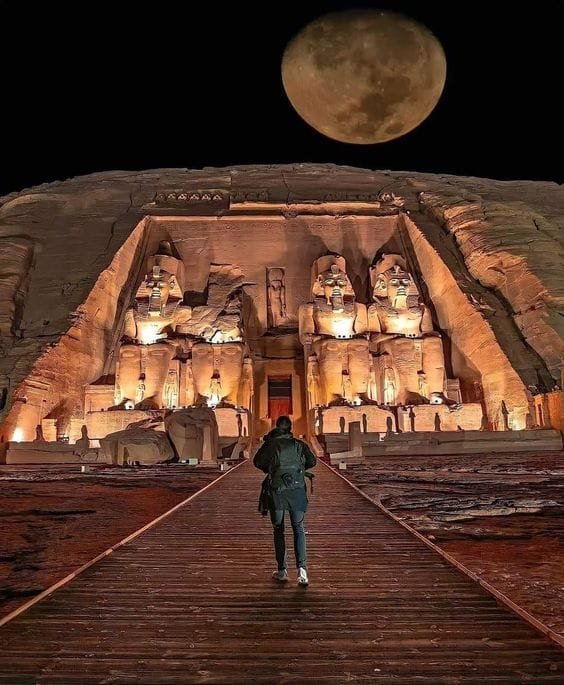
8. Guided Tour vs. Independent Visit
When planning a visit to Abu Simbel, one of the key decisions is whether to take a guided tour or visit independently. A guided tour is highly recommended for a deeper understanding of the temples’ significance, as it includes an expert Egyptologist guide who will provide invaluable insights into the history, artwork, and architecture of the site. These guides are knowledgeable about the symbolism behind the statues, reliefs, and the ancient Egyptian religious practices that are depicted in the temple’s carvings. Most tours are all-inclusive, covering transportation, entrance fees, and sometimes even meals, ensuring a stress-free experience. Guided tours can be group-based or private, with the latter providing a more personalized and intimate experience. However, if you prefer more freedom and flexibility, visiting independently is possible. You’ll still need to plan transportation and ensure you have enough information to appreciate the site fully. While an independent visit allows for more exploration at your own pace, you may miss out on the deeper context and historical details that a guide can offer. Additionally, if you're unfamiliar with the site's layout or the history, a guide can enhance your visit and make it far more rewarding.
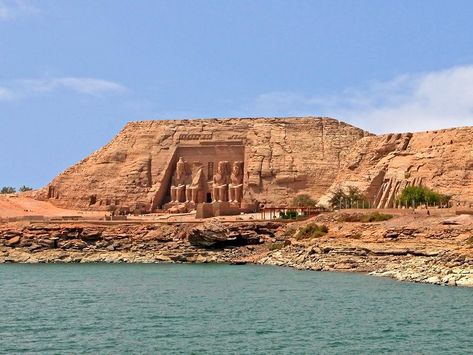
9. Essential Tips for Visiting Abu Simbel
When planning a trip to Abu Simbel, a few essential tips can help ensure a smooth and memorable experience. First, it’s important to arrive early to avoid the crowds and heat, especially if you're visiting outside of the solar alignment dates. The temples are at their most peaceful in the early morning, giving you the chance to experience the grandeur of the site in serenity. Dress appropriately for the desert climate—wear lightweight, breathable clothing to stay cool, and don't forget sunscreen and a wide-brimmed hat to protect yourself from the harsh sun. A pair of comfortable walking shoes is also essential for exploring the site. If you're traveling from Aswan, be prepared for a 3 to 4-hour bus ride each way, as the journey can be long. To make the trip more pleasant, bring snacks, water, and some form of entertainment. If you're lucky enough to witness the solar alignment event, make sure to arrive well before sunrise, as this rare phenomenon is best seen from the temple entrance, where sunlight illuminates the inner sanctuary. Lastly, always show respect for the site by adhering to local regulations—avoid touching the carvings and statues, as the temples are both cultural and religious landmarks.


